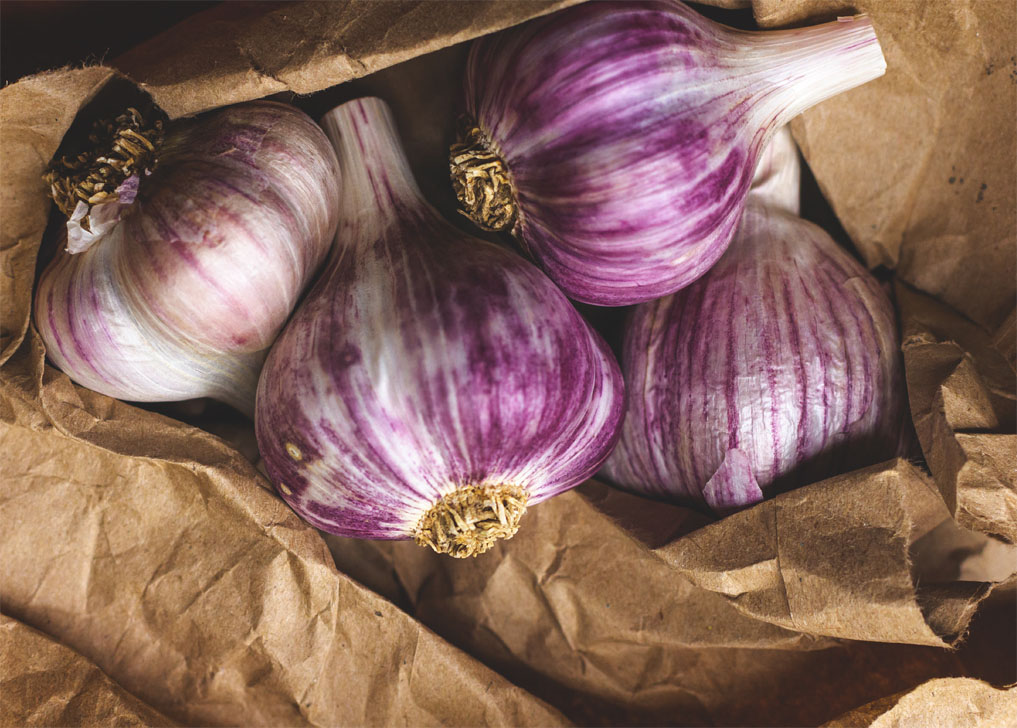Garlic — the bulb you don't have to baby
I enjoy gardening, but I do sometimes wonder if my garden enjoys me. It’s my habit to hover and creep in the manner of the worst of helicopter parents, steadily pruning and watering in nervous anticipation…often failing to just let things be. I imagine the herbs whispering to each other, “Look out, it’s her again.”
So it will be a challenge for me to take on garlic, which, after planting in the fall, requires little care or encouragement and is mostly content to be left to its own devices over the winter.
Yet the lure of homegrown garlic is strong. It bears no comparison to that dry and pasty stuff you bought in the supermarket—grown who knows when—that you are now trying desperately to force through your garlic press, which in turn is forcing you to rethink your upper body workout. Homegrown garlic oozes flavour and oils. It’s juicy, spicy, and hot. Use one clove where you’d normally use three.
I dream of ornate braids of garlic hanging in my kitchen, just so. I could casually select a bulb, adding it ever so nonchalantly into my latest creation. But if this is to be a reality, I need an appropriate kind of garlic to grow. Garlic can either be hard-neck or soft-neck, and the bad news for us romantics is that only soft-neck varieties can be braided. Soft-neck generally performs better in warmer climates and while it will grow here, most BC garlic is of the hard-neck variety—think strong and spicy Russian Red. Though my dreams of farmhouse chic décor are dashed, the good news is that hard-neck varieties produce scapes.
Mid-October to early November is an optimal time to plant. This allows the plant to develop a substantial root structure over many months, until spring, when it can turn its energy to bulb production. Expect no activity until February or March, when shoots will emerge from the soil. Not much care is required here either—just a little water if it doesn’t rain, and how likely is that in Vancouver?
Soon after, scapes will form on hard-neck varieties, bending gracefully into circles of green. A scape is the part of the plant that will eventually form a flower. Scapes can and should be harvested to focus the plant’s production energy on the bulb—and also because they are delicious tossed in olive oil for pasta or made into a pesto. Once that’s done, it’s more waiting and not much tending.
By July, the bulbs will start talking through their brown and wilting stalks. “Hey lady—it’s time.” They are ready for harvest and it’s time to dry, clean, and cure. Finally, there’s plenty to do.
TIPS FOR GARLIC
CHOOSE
Plant varieties that you will enjoy eating. The best way to find out if you prefer the strong, hot aromatic flavour of a German Red, or the rich sweetness and more moderate heat of a
Spanish Roja is to visit your farmers’ market or local grower and try before you buy.
Look for seed garlic and local, organic heirloom varieties. Avoid planting conventional supermarket garlic. We’re doing this to avoid that stuff.
PLANT
Separate a bulb of garlic into cloves, keeping paper surrounding clove intact.
Plant 4 inches apart and 4 inches deep, in full sun and in loose, fast-draining soil.
Make sure blunt end is down. Cover and water to establish.
HARVEST
Harvest bulbs around mid-July, when bottom leaves are dry and brown.
Instead of pulling, loosen the soil around the plant and gently ease the bulb out.
DRY
Lay harvested garlic on racks outside, out of direct sunlight.
Once any clinging dirt is dry, brush it off gently with a soft brush.
Do not rinse dirt off with water as this could encourage mold.
CURE/STORE
Clip roots close to the stem to remove.
In hard-neck varieties, also clip off stem.
Remove any damaged heads and store in a cool, dry place: in a wire basket or burlap sack so that air can circulate.
If you have a soft-neck variety, now’s the time to braid the stems and hang it.
Reserve your best bulbs for seed.





